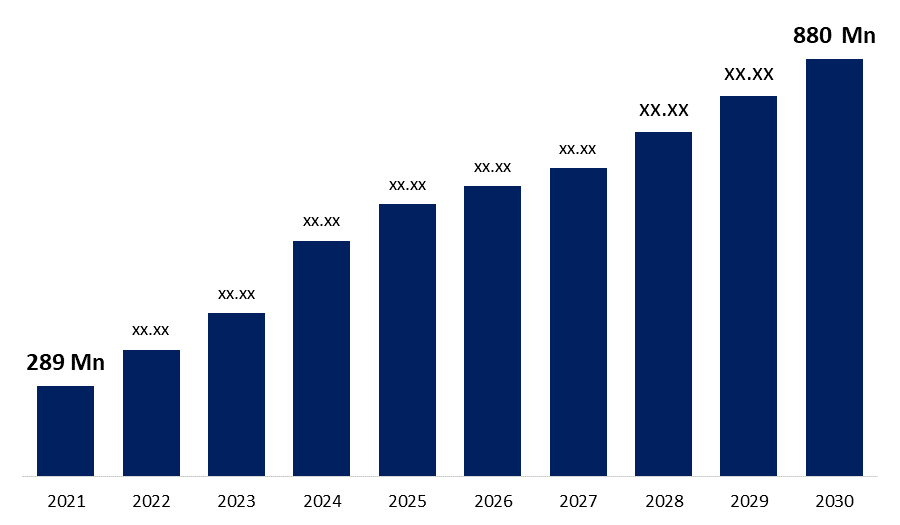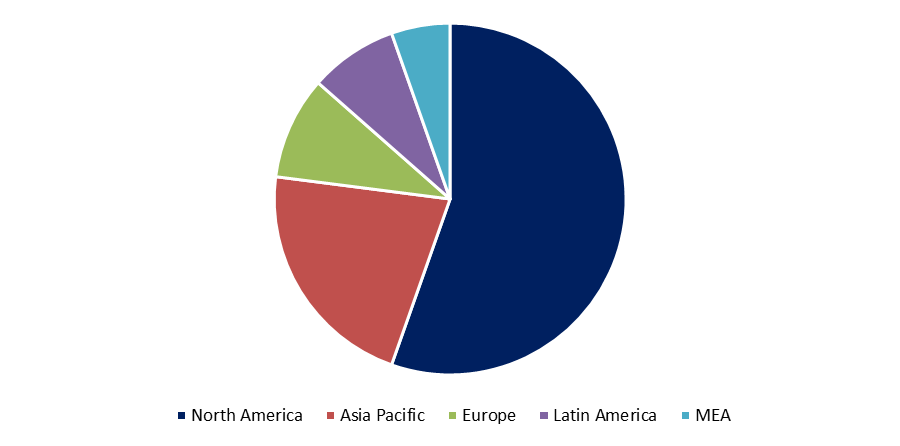Global Laser Collimating Lens Market by Material (Glass, Plastic & Others); By Wavelength (<1,000, 1,000-1,500, 1,500-2,000, >2,000); By End Use (Automobile, Medical, LiDAR, Light and Display Measurement, Spectroscopy, Interferometry & Others); By Region (U.S., Canada, Mexico, Rest of North America, The UK, France, Germany, Italy, Spain, Nordic Countries (Denmark, Finland, Iceland, Sweden, Norway), Benelux Union (Belgium, the Netherlands, Luxembourg), Rest of Europe, China, Japan, India, New Zealand, Australia, South Korea, Southeast Asia (Indonesia, Thailand, Malaysia, Singapore, Rest of Southeast Asia), Saudi Arabia, UAE, Egypt, Kuwait, South Africa, Rest of Middle East & Africa, Brazil, Argentina, Rest of Latin America) - Global Insights, Growth, Size, Comparative Analysis, Trends and Forecast, 2021-2030
Industry: Semiconductors & ElectronicsThe Global Laser Collimating Lens Market is likely to grow from USD 289 million in 2021 to USD 880 million by 2030, at a CAGR of 5.7%. Collimation is the process of aligning light or particles in a straight line. When it comes to light measurement, collimating guarantees that the light spreads as little as possible. To achieve accurate readings from devices like spectrometers, colorimeters, and light metres, the light entering the instrument should be parallel. As a result, collimating lenses are utilised in these instruments to ensure that correct readings are obtained. A collimating lens system typically consists of a tube containing one or more lenses. Light is collimated with high accuracy by choosing the right lens with the right characteristics and focal distance. For remote sensing, a collimating lens can be linked directly to the measuring instrument or indirectly via a fibre connection. Collimating lenses are used in a variety of industries, including automobiles, medical devices, LiDAR, light and display measurement, and spectrometers. The market's expansion is being fuelled by rising demand for high-end microscopy systems in a variety of applications, as well as technological developments in microscopes. Growing demand for collimating lenses in a variety of applications, as well as the growing importance of fibre optics collimating lenses, are likely to present significant potential possibilities for market players.

Get more details on this report -
Material Outlook
The glass segment accounted for the larger market share for the global laser collimating lens market. Owing to the longer light takes to pass through a substance with a higher refractive index, the longer it takes for light to go through it. The refractive index measures the difference between the speed of light in vacuum and the speed of light in the lens material. When light travels at a slower speed, it is refracted more when it passes through the lens material. Glass materials offer a wider range of refractive indexes and are denser than plastics. As a result, increased glass density will fuel demand for glass collimating lenses.
Global Laser Collimating Lens Market Report Coverage
| Report Coverage | Details |
|---|---|
| Base Year: | 2021 |
| Market Size in 2021: | USD 289 Million |
| Forecast Period: | 2021 - 2030 |
| Forecast Period CAGR 2021 - 2030 : | 5.7% |
| 2030 Value Projection: | USD 880 Million |
| Historical Data for: | 2017 - 2020 |
| No. of Pages: | 230 |
| Tables, Charts & Figures: | 118 |
| Segments covered: | By Material, By Wavelength, By End Use, By Region |
| Companies covered:: | LightPath Technologies Inc, Ocean Optics, Inc., INGENERIC GmbH, TRIOPTICS GmbH, Avantes BV, Auer Lighting GmbH, IPG Photonics Corporation, Optikos Corporation, The Optoelectronics Co. Ltd, Thorlabs Inc. |
| Growth Drivers: | 1) The glass segment accounted for the larger market share 2) The automotive segment accounted for the larger share |
| Pitfalls & Challenges: | COVID-19 Empact, Challenge, Future, Growth, & Analysis |
Get more details on this report -
End Use Outlook
The automotive segment accounted for the larger share of the global laser collimating lens market owing to the automobile manufacturers are continuously striving to differentiate their goods from those supplied by competitors. Automobile manufacturers are using sophisticated lighting technologies such as LED and laser to differentiate their products from those of their competitors, which is helping to drive the market. As a result, the growing use of LED headlamps in automobiles creates market prospects.
Regional Outlook
North America accounted for the highest share in the global Laser Collimating Lens market in 2020. Presence of major players and advanced technologies is propelling the demand of laser collimating lens market. Growing number of applications, including the growth of optic systems, there are a number of advantages when compared to other lens types. As a result, collimation lenses are being used more frequently in industry. And this is the major aspect that will most likely propel the collimating lens industry forward in the near future.

Get more details on this report -
Competitive Landscape
The report provides both, qualitative and quantitative research of Laser Collimating Lens market, as well as provides comprehensive insights and development methods adopted by the key contenders. The report also offers extensive research on the key players in this market and details on the competitiveness of these players. Key business strategies such as mergers and acquisitions (M&A), affiliations, collaborations, and contracts adopted by these major market participants are also recognized and analyzed in the report. For each company, the report studies their global presence, competitors, service offerings and specification amongst others. For instance, in February 2019, INGENERIC (Germany) introduced new microlens arrays with shorter focal lengths and a higher number of lenses per wafer. The business creates bespoke arrays and sells them for use in serial production.
Some of the players operating in the laser collimating lens market are LightPath Technologies Inc., Ocean Optics Inc., Ingeneric GmbH, TRIOPTICS GmbH, Avantes BV, Auer Lighting GmbH, IPG Photonics Corporation, Optikos Corporation, The Optoelectronics Co. Ltd, Thorlabs Inc.
Global Laser Collimating Lens market
By Material
- Glass
- Plastic
- Others
By Wavelength
- <1,000
- 1,000–1,500
- 1,500–2,000
- >2,000
By End Use
- Automobile
- Medical
- LiDAR
- Light and Display Measurement
- Spectroscopy
- Interferometry
- Others
Key Players
- LightPath Technologies, Inc.
- Ocean Optics, Inc.
- INGENERIC GmbH
- TRIOPTICS GmbH
- Avantes BV
- Auer Lighting GmbH
- IPG Photonics Corporation
- Optikos Corporation
- The Optoelectronics Co. Ltd
- Thorlabs Inc.
Need help to buy this report?